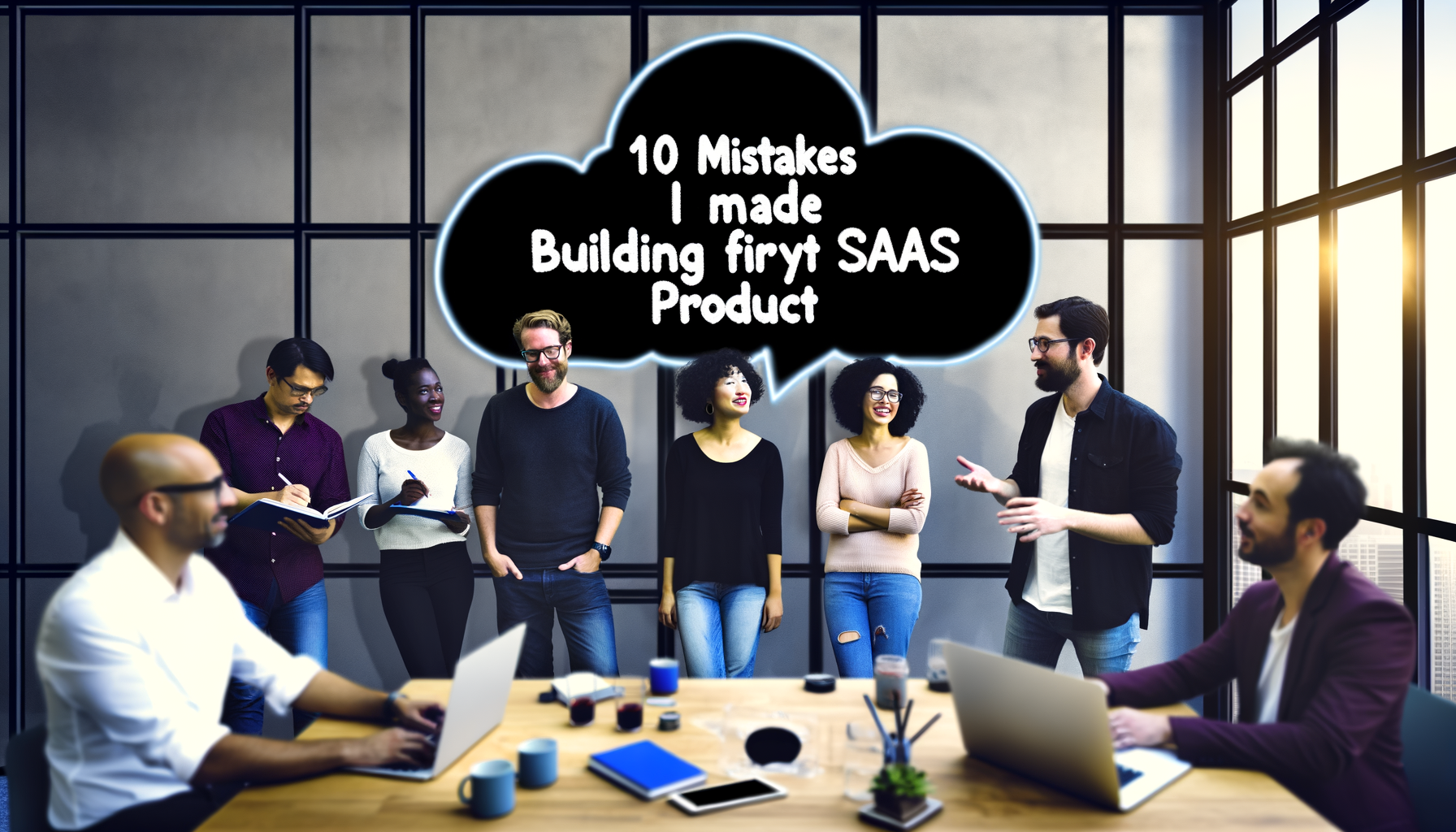
10 Mistakes I Made Building My First SaaS Product
Introduction
Embarking on the journey of developing a SaaS (Software as a Service) product can be as thrilling as it is challenging. Despite the allure of scalable business models and recurring revenue, the path is fraught with potential pitfalls. As someone who has navigated these waters, I’ve made my fair share of SaaS mistakes. Reflecting on these experiences can provide you with invaluable startup lessons for your own ventures.
Understanding the Market: The Most Overlooked Aspect
One of the initial glaring SaaS mistakes I encountered was underestimating the importance of thorough market research. Initially, I was so captivated by my idea that I didn’t fully validate it against the market demands and competitive landscape. This oversight often leads to developing a product that, while functional, doesn’t sufficiently address the needs or pain points of potential users.
Pro tip: Prioritize customer interviews and competitor analysis to ensure your product is truly needed.
MVP: More than Just a Buzzword
Creating an MVP (Minimum Viable Product) is essential, but my approach was flawed. I invested too much time and effort in perfecting this initial version instead of focusing on iterating based on user feedback. A common novice error is to equate MVP with a finished product rather than a test bed for learning and refinement.
Here’s what I learned: Start simple, focus on core functionality, and be ready to pivot based on user responses.
The Pricing Conundrum
Determining the right pricing strategy was another major hurdle. My initial pricing was set too low, which not only undervalued the offering but also hampered the cash flow necessary for growth. Conversely, overpriced products can scare off potential users before they experience the value proposition.
- Research your competitors’ pricing.
- Consider offering tiered pricing.
- Test different pricing models to see what resonates with your audience.
Ignoring User Feedback: A Fatal Error
Feedback is a gift, but it’s one that I didn’t fully appreciate at first. Ignoring or dismissing feedback can lead to repeated cycles of unnecessary development work. Being receptive to your users’ input and ready to make adjustments can often spell the difference between a stagnant product and a flourishing one.
Underestimating the Importance of a Cohesive Team
In the early stages, I placed too much emphasis on technical capabilities while overlooking the significance of having a dynamic, aligned team. Building a SaaS product isn’t just about coding; it requires design, marketing, customer support, and strategic planning—all elements that necessitate a diverse skill set.
Assemble a team with varied expertise to cover all critical aspects, and cultivate a culture of open communication and support.
Overlooking the Significance of User Experience
Early on, I mistakenly prioritized technical capabilities over user experience and intuitiveness. A complex yet powerful product may fail to gain traction if users find it cumbersome or non-intuitive. Striking a balance between sophistication and simplicity is essential for retaining and engaging your audience.
Failing to Prioritize Customer Support
I initially thought that a great product would speak for itself, but customer support plays a crucial role in building trust and loyalty. Effective support can turn your customers into advocates of your brand.
Invest in a responsive, knowledgeable support team and leverage tools like AI chatbots for efficiency.
Scalability: Planning for Success
While building my first SaaS product, scalability was an afterthought. This mistake became apparent when user numbers outgrew existing infrastructure, leading to performance issues and customer dissatisfaction.
Plan for growth from the outset. Opt for scalable architecture and choose cloud services that can grow with your user base.
Security: Never a Non-Issue
In the early stages, security was not my primary concern, a mistake that I later regretted. In today’s digital economy, data breaches can have devastating consequences. Implement robust security measures to protect your user’s data and ensure compliance with industry standards.
The Power of Networking and Mentorship
I initially underestimated the value of building a professional network. Connecting with other founders and industry leaders offers insights and support that can prevent repeat mistakes and accelerate growth. Networking can also present opportunities for partnership and collaboration that you might not encounter otherwise.
Attending entrepreneurial events, engaging in SaaS communities, and seeking mentorship can provide a wealth of knowledge and resources that are crucial to your startup’s success.
Conclusion
Embarking on the journey to build a successful SaaS product is filled with learning opportunities, many stemming from initial missteps. Reflecting on the startup lessons from my SaaS ventures, I’ve come to appreciate the complexities and nuances involved. By sharing these experiences and insights, I hope to guide new founders toward more informed decisions, avoiding the common SaaS mistakes I encountered. For those seeking to dive deeper into the realms of entrepreneurship and innovation, join me on this ongoing journey by following my insights and experiences.
